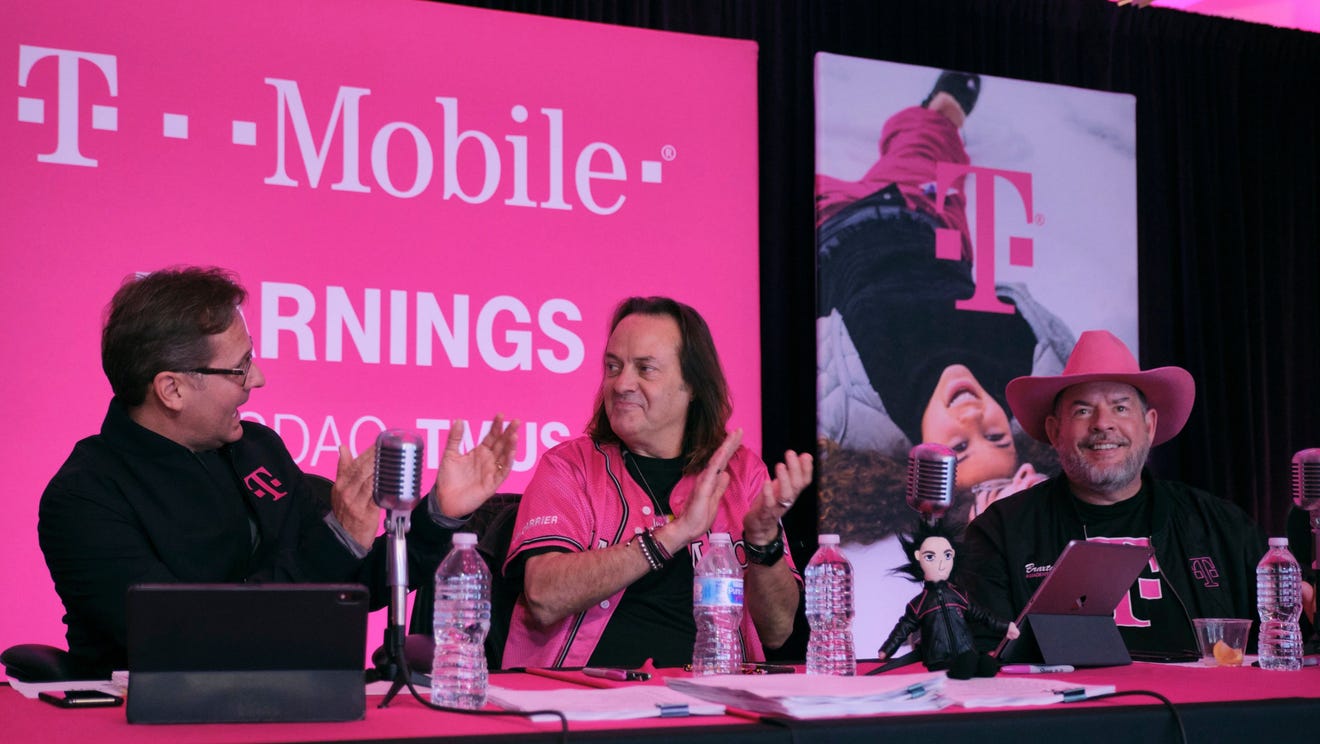
This article is more than
9 year oldT-Mobile now has America’s second-best coverage, new ranking says
America’s wireless industry has traditionally featured a rigid class structure. The ruling class consists of AT&T and Verizon, the two biggest carriers with the two biggest networks, and below that you have smaller Sprint and T-Mobile, which might cost less but couldn’t connect you as widely.
But a new study says T-Mobile (TMUS) is moving on up. OpenSignal’s “State of the Mobile Network” report ranks T-Mo’s network as the second-best, only a few percentage points behind Verizon (VZ) in its LTE reach. AT&T (T) ranked third, and Sprint (S) was considerably farther behind.
This should give T-Mobile’s irrepressible CEO John Legere something new to tweet about. And when put together with other assessments of the US wireless industry, it should also suggest the usual view of the business needs an update.
OpenSignal’s verdict
OpenSignal, based in London and Laguna Hills, Calif., has been assessing wireless carriers since 2010 by collecting anonymized data from its iOS and Android signal-toolkit apps.
The company’s new study — based on 2,818,124,916 of those app-generated reports, collected from 120,586 users from May 1 to July 10 — found that while Verizon users spent 85.89% of their time on fast LTE signals, T-Mobile users had it almost as good by staying on LTE 83.2% of the time.
The figure for AT&T was 80.37%, while Sprint — now recovering from years of distraction — offered 69.85% LTE coverage.
OpenSignal also found that T-Mobile had the fastest LTE, with an average download speed of 16.28 Mbps. Verizon was right behind at 15.94 Mbps, while AT&T’s downloads averaged 12.83 Mbps. Sprint trailed with a 9.36 Mbps average.
“T-Mobile has undergone a remarkable transformation,” the report said. True: Not only has the company ditched such wireless annoyances as two-year contracts and extortionate international-roaming charges, it’s advanced its network immensely.
(Since all that wouldn’t have happened if the government had not scuttled AT&T’s 2011 plan to buy T-Mobile, an un-ironic “Thanks, Obama!” is an appropriate response.)
To grasp T-Mobile’s progress, consider OpenSignal’s March 2014 “State of US LTE” report. That assessment gave Verizon a commanding lead over everybody else (83.2% LTE) and left T-Mobile (61.1% LTE) in third place after AT&T (70.6%).
“T-Mobile has invested a lot into coverage in the last year,” OpenSignal analyst Kevin Fitchard wrote in an e-mail. “It’s using new 700 MHz airwaves” — which go farther than the higher-frequency spectrum T-Mo relied on earlier — “to build new LTE towers in rural areas and improve its existing LTE networks in cities.”
But he’s not expecting Verizon to cede first place. “Verizon is known for making massive network investments if its reputation is at risk,” Fitchard wrote. “Verizon may very well be pushing past 90% availability in the coming year.”
Other views: PCMag, RootMetrics
If you’ve often seen T-Mobile’s signal fade to slow 2G in rural areas — as a T-Mo subscriber since 2013, I sure have — OpenSignal’s claims may look like a reach.
There are grounds for skepticism. Because OpenSignal’s iOS app only recently gained the ability to measure network quality in the background, its testing relies heavily on Android phones. Its results will also reflect the foibles of phones that don’t have the same reception.
“There are some devices that work better with the network than others,” said Recon Analytics founder Roger Entner. He prefers automated drive testing: “You’re using the same device on all of the networks at the same time doing the same test.”
PCMag does just that in its annual Fastest Mobile Networks report, and this year’s testing also found T-Mobile to have greatly improved. While Verizon’s 4G got an overall “speed score” of 97 out of 100, T-Mobile was not far behind with a score of 93, while AT&T and Sprint trailed at 86 and 84.
The wireless-analytics firm RootMetrics (for which Entner has done some work) also does automated drive testing for data as well as voice and text, and its nationwide report from the second half of 2015 reached a different conclusion. This subsidiary of the research and analytics firm IHS Markit ranked Verizon as the top choice with a score of 94.5 out of 100, followed by AT&T at 91.3, Sprint at 86 and T-Mobile at 80.9.
(T-Mobile’s score sank from poor voice performance. T-Mobile lit into RootMetrics for not testing Voice over LTE calling; the research firm responded by saying it only tests features used by a majority of a carrier’s customers at the time.)
RootMetrics has yet to post a newer nationwide report, but its 2016 metro-area reports show T-Mobile first or tied for first in 40 of the 125 markets surveyed — nowhere near Verizon’s 97, but not far behind AT&T’s 51.
Based on all that, I still can’t call T-Mobile the easy choice for somebody focused on coverage above all (note that one of my other gigs is maintaining the Wirecutter’s guide to the big four wireless carriers). But I will say it’s past time to continue seeing this carrier as the one for urban hipsters—even if T-Mobile’s magenta-hued ads keep suggesting just that.
(Verizon has made an offer to buy Yahoo Finance’s parent company, Yahoo.)
More from Rob Pegoraro:
- Here’s how Democrats would handle tech policy in a Hillary White House
- 3 features that social networks should never, ever borrow from one another
- Here’s what Republicans (and maybe Trump) think about tech policy
- Twitter won’t solve its harassment problem by banning one jerk
- If you value privacy, WikiLeaks stopped being your friend years ago
Email Rob at rob@robpegoraro.com; follow him on Twitter at @robpegoraro.

